#historical men's clothing
Photo



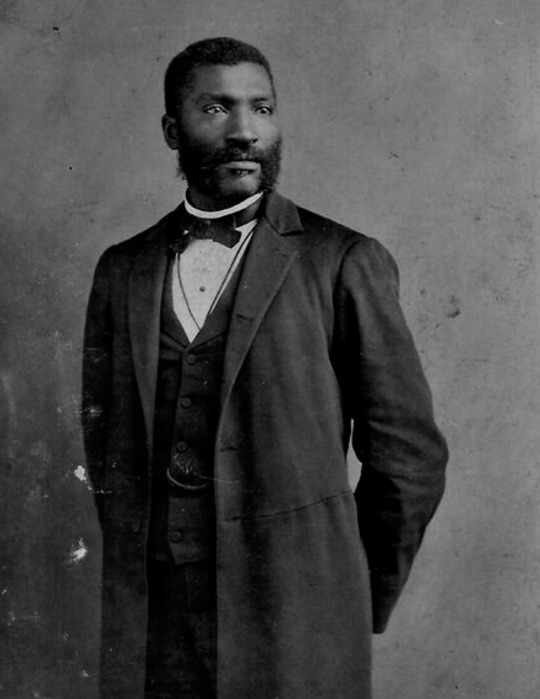
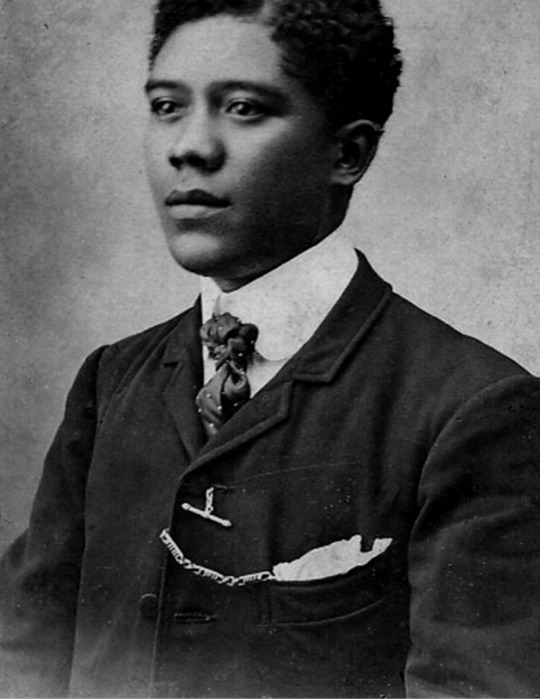




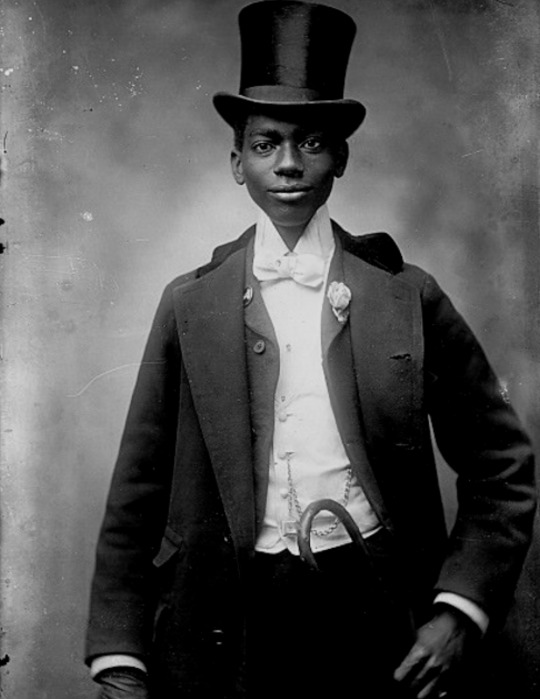
vintage men’s fashion in black history
#i did a women edition so here's the mens one#history#vintage photography#photography#beauty#vintage#fashion#vintage fashion#historical clothing#historical#black history
3K notes
·
View notes
Text
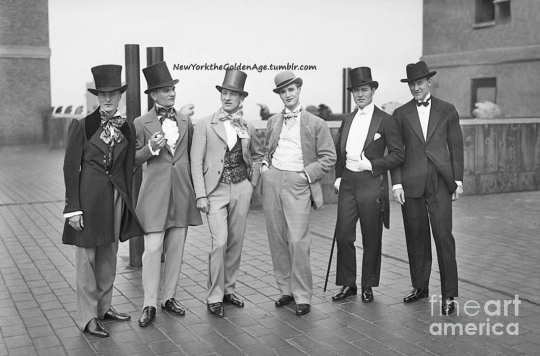
42nd Steet celebrated its centennial in 1925. These men are displaying what the well-dressed man would be wearing throughout those hundred years, September 29, 1925.
Photo: Bettmann Archive/Getty Images/Fine Art America
#vintage New York#1920s#42nd St.#vintage men's clothing#men's fashion#Sept. 29#historical fashion#men's historical fashion#29 Sept.#29 September#September 29
220 notes
·
View notes
Text
People who don’t like Lucius are wild. ‘He had sex in public’. The ship is his home. He doesn’t have a room!
#also as anachronistic as the show is this is pretty on point for age of sail#iirc men would find a spot on ship with a little bit of privacy for buggery#but otherwise just keep your clothes mostly on and hope no one tries to report you#but this is also on like navy ships#pirates may have been more open but it also could have varied ship to ship#we can only speculate#our flag means death#historical fiction#i might delete later idk
494 notes
·
View notes
Text

Tintype of a Native American man arrayed in a beautiful combination of textiles and textures, c. 1860s
#from an ended ebay auction with no info beyond “Native American”#so far I've not found any other examples of similar hairstyle—especially these distinctive long spiral paper(?) decorations—or clothing#I'd love to know more but in any case what a stunning image#19th century#1800s#1860s#19th century fashion#historical fashion#fashion history#men's fashion#menswear#19th century photography#tintype#ferrotype#19th century men
351 notes
·
View notes
Text

"The Shape of Things" (0002)
(More of The Shape of Things Series)
0001
#ai men#ai artwork#ai generated#ai art community#ai image#gay ai art#ai fashion#fashion illustration#art direction#blond hair#lean men#alt men#alt guys#geometry#black male body#black male beauty#historical clothing#adobe photoshop#collage#montage#graphic art#ai gay
35 notes
·
View notes
Text
New shirts & handkerchiefs
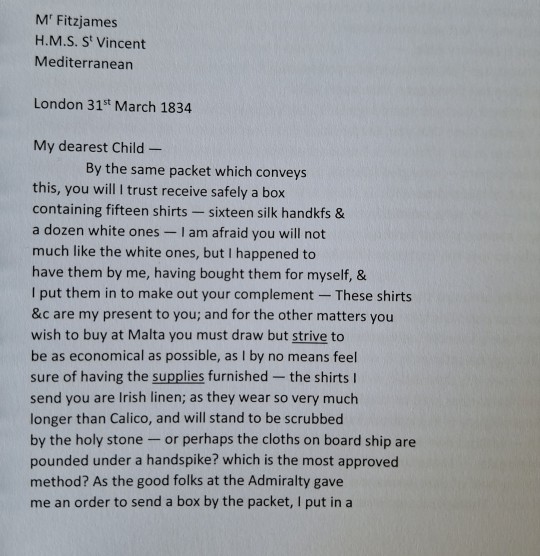
Robert Coningham took such good care of his dearest boy, making sure he had enough clothes and didn't have to buy them abroad.
#james fitzjames#royal navy#naval history#historical men's fashion#1830s fashion#historical clothing
36 notes
·
View notes
Text


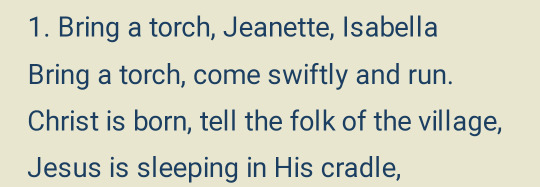


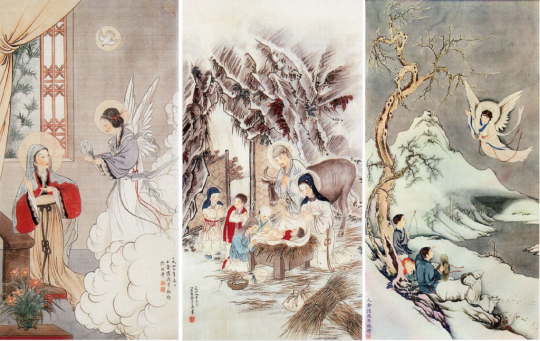

We see him come and know him ours
Russia: "Carol of the Russian Children," traditional // Kenya: The Nativity, Elima Njau // France: "Bring a Torch, Jeanette Isabella," Nicolas Saboly // Haiti: Madonna and Child, Ismael Saincilus // Australia: "The Three Drovers," William James // China: Tryptic by Lu Hongnian // Canadian/Algonquian: "Huron Carol," Jean de Brébeuf
#the visual depictions are lovely#but what really gets me every time are the little cultural details in the music#music that tells the story of the Nativity while placing it in a world that's familiar to the listener#fur robed moujiks on snowboard plateaus in place of middle eastern shepherds#bark lodges instead of stables and rabbit skin in place of swaddling clothes#wandering hunter and chiefs from far off places instead of shepherds and wise men (man i love the Huron Carol)#and little french girls running to gather the village to come see Jesus#it's easy for an excess of historical concern to make Jesus feel distant and far off#/I know/ that Jesus was born in the ancient near east and have had my fill of books and sermons and the like unpacking the implications#I've laughed with my friends and family at the wild inaccuracies of Nativity sets and tellings#the crazy blonde mary in the kids nativity set at Walmart#what is that alpaca doing at the living Nativity don't they know those are south American?#yada yada#and then i look at these carols and think. it's okay not to get mired in the history. good even#yes Jesus entered into time and space in a very specific manner#but he also came for all of us#as another carol says: we see him come and know him ours#i just think this practice is lovely#that the impact of the Incarnation was such that it send little french girls running to their villages#and drew algonquin hunters and russian peasants to the manger to see him#it's the great crowd of witnesses in a way#all of us together preparing him room throughout all the corners of the earth#in Bethlehem that night it was only the shepherds who got to see him#but in spirit it was all of us#because it's just like the angel said:#good news of great joy which will be to all people#to all people#starting with the shepherds and going out to all the earth#unto us a child is born#intertextuality
61 notes
·
View notes
Text
What you need to understand about my historical costuming is that while I love fancier outfits, I'm not aiming to look like a Regency-era aristocrat. I'm a Jew. If I wasn't part of the lower class, I would have been part of the merchant class. Flashy colours, not exactly abiding 100% by the etiquette and dress rules, but still being able to afford nicer fabrics and utilize them in creative ways that might not be dared to be used by the nobility- that's textbook merchant class baby. And honestly it's much more fun, anyway.
136 notes
·
View notes
Text
Fashion History Books on Internet Archive

Illustration in La Mode by Paul Gavarni, c. 1835 (Rijksmuseum)
A selection of some of my favourites, free to read and check out once you create a (free) account!
Handbook of English Costume in the 19th Century, by C. Willett Cunnington and Phillis Cunnington. I can vouch for this as one of the greatest books in my collection, extensive menswear information. By the same authors: English costume in the Eighteenth, Seventeenth, and Sixteenth centuries.
A History of Men’s Fashion, by Farid Chenoune. A masterwork, absolute must-read primer on men’s fashion from the late 18th century to the late 20th century.
The Encyclopedia of World Costume by Doreen Yarwood. Covers many different cultures over a huge span of time so most topics are not treated in-depth, but still a great reference.
The History of Underclothes, by C. Willett Cunnington and Phillis Cunnington. Also covers men’s shirts in Western dress history, as these were considered undergarments.
Fashioning the Body: An Intimate History of the Silhouette, edited by Denis Bruna. A collection of essays on changing dress silhouettes in Western fashion over time, some of them very insightful.
The Dictionary of Fashion History, by Valerie Cumming. This is the first edition and I have the second, but my top fashion history dictionary and go-to for textiles and items of dress!
#fashion history#dress history#historical men's fashion#historical fashion#internet archive#open library#reference books#fashion#history#textiles#clothing#western fashion
350 notes
·
View notes
Note
lesbyler as witches getting tried in salem pls
Ok, this wasn’t next in line, but I needed to do this immediately bc I love it.
I’ve actually been to Salem! The history behind it is pretty sad since everyone tried and executed was actually innocent, but for the sake of this, Willow is genuinely a witch bc she would and I need evil Lesbyler now (or at least evil Willow- Michelle is an unknowing accomplice)

I’d never drawn the genderbent Byler before, so this was fun! I do hope they end up surviving.
#byler#stranger things#byler fanart#lesbyler#genderbent byler#Salem byler#Poor Michelle#mike wheeler#will byers#Historical women’s clothes are so much more interesting than mens#Willow is such a witch name#It was meant to be#history with byler
90 notes
·
View notes
Text

The Fountain (Villa Torlonia), John Singer Sargent. 1907.
#aesthetic#art#art history#fashion#historical fashion#historical art#edwardian women#women in art#edwardian aesthetic#Edwardian era#1900s fashion#1900s#1900s clothing#1900s art#john singer sargent#men in art#men#Edwardian men#1907#artist#artists#fountain#women#Laurie and Amy vibes if Laurie and Amy got transposed to the 20th century lol#Laurie and Amy#little women#little women vibes
44 notes
·
View notes
Note
hi! i was reading an article on fashion history today, specifically the 1840s, and it seemed to focus heavily on the idea of clothes relating to female oppression. i was wondering your opinion, if you have the time?
the article is here, https://fashionhistory.fitnyc.edu/1840-1849/
in particular, the article says “Women’s clothes became so constricting that her passivity in society was clear (C.W. Cunnington 135)”. i suppose i’m not entirely sure how valid that is? i’m just looking for another opinion, especially since i’m a complete amateur at fashion history. i know that you’ve talked before about some misconceptions around victorian womenswear, especially with corsets, so i’d love to know if this is of a similar vein to that or if it’s something different with a different background.
if you take the time to respond, thank you so much! i hope you’re doing well :)
This is. A very strange article, providing citiations for opinions as if they were facts. Like...why are you giving a citation for an interpretation of 1840s feminine clothing? I guarantee you won't find anybody in contemporary literature saying "ah yes, women dress like this because they are passive! that is the conscious reason we do this and we have all agreed on it." So it's not really a fact, is it? And therefore, why is it being cited as if it were?
They also seem very determined to believe that these clothes restricted movement to an unmanageable degree. While it's true that you can't bend at the waist easily in 1840s stays, you can still bend at the hips or kneel down. Preventing you from moving in one very specific way doesn't necessarily prevent you from accomplishing the same action with a different movement. It's also bizarre because they talk about women of limited means having access to fashion via ladies' magazines, but don't carry that through to its logical conclusion: working-class women wore similar clothing styles to their upper-class counterparts. And therefore were also wearing stays (practical applications thereof aside). And could ill afford to have their physical action limited. And therefore...? Maybe these garments weren't whalebone cages that kept women from living their lives, perhaps?
Also, this Cunnington fellow they cite for their FactPinions died in 1961. He was active primarily during the period of greatest disdain for all things Victorian- the early to mid 20th century. Are we examining those biases and comparing the opinions expressed therein to modern scholarship, World-Renowned Institution F.I.T.? No! Of course not! Why would we, when Everybody Knows Victorian women's clothing was horrible and restrictive and kept them from doing anything ever? Their society was highly misogynistic, so it must follow that every single thing about their lives was designed to actively oppress them! That's how human beings work, after all! Ahahaha! AHAHAHAHAHAHA!
[Marzi.exe has encountered an error. Please wait.]
Don't get me wrong, he was one of the founders of my main field. He and his wife saved a vast number of garments from being lost forever, and I appreciate that. But he was, as we all are, a product of his time- and that time just happened to absolutely loathe everything about the era he was examining. So I'm not sure why we're taking his word as gospel here- especially when it's not even hard fact.
Like, for example, he says that the scoop bonnets of the era acted like blinders for women, a "moral check" keeping them focused on "the straight and narrow path ahead."
Except. Mr. Cunnington.
Women can turn their heads.
You can just. You can look in another direction. You're not a horse in a head-rein when you put on a coal-scuttle bonnet, so it hardly keeps you from seeing "immoral" things. It is, quite frankly, Not That Deep.
Aaaaand there's the old bugaboo of children's corsets, with a direful comment that girls began "corset training" as young as ten years old. I've gone over this before but, whatever salacious literature of the day may imply, it was not at all common to waist-train young children. Indeed, most so-called "children's corsets" that I've encountered are more like lightly stiffened vests designed for posture support, and can't even be tightened.
There was also at least one very weird technical observation about clothing in here, which surprised me for a fashion school where you'd think at least one person editing their articles would have sewing experience: the comment that the tightly-fitted armsceyes (arm holes) of 1840s bodices kept women from raising their arms above 90 degrees.
I could be wrong, but in my experience a more fitted armsceye allows for MORE freedom of movement, not less. One of the biggest issues I've encountered- and heard other sewists complain about -with modern mass-produced garments is armsceyes cut too large. This may seem counterintuitive, but the principle is something like: Armsceye Cut Close To Armpit = Less Pulling On Body of Garment = Can Raise Arm Higher Without Disturbing Rest Of Shirt/Dress/Whatever. And for an extremely close-fitted garment like a Victorian bodice, that effect could mean that you really CAN'T raise your arm above your head. Trust me; I know this from having made the mistake too many times in my own historical sewing. Now, if the armsceyes were cut very small in general- high in the armpit but very low on the shoulder, too -that maybe could restrict movement somewhat. And I haven't examined many 1840s bodices; it's possible that's how the sloped-shoulder silhouette of the day was achieved.
But I really doubt that all women went around being unable to raise their arms above their heads given that, again, many of them had to work. And it seems weird that a fashion school would simply say "tight armsceyes Bad" without explaining themselves more specifically. Potentially, depending on what they meant, it's even downright ignorant.
In conclusion: the article is correct in a lot of specifics, like the shapes and silhouettes concerned, the trend towards historical inspiration and very subdued ornamentation, etc. It's just when they start trying to interpret the imagined Deeper Meaning of the garments, or extrapolate about the lived experience of wearing them without ever trying it/examining what women actually said about it in the period (or didn't; absence of discussion can be telling in itself) that it starts to go off the rails.
I also feel like it's emblematic of a larger issue within the field, namely: You Can Just Say Whatever The Hell You Want About Dress History And People Will Believe You. One might think academia would be immune to this and more rigorous in its fact-checking, but. One would be wrong. Probably because there have been so many myths floating around for decades, getting repeated over and over, never being questioned because- as I said above -everyone is very very ready to believe that the past was a total hellhole. And most of these myths bolster that image, so...why would anyone doubt them?
Besides the small, unimportant fact that, you know. They're not true.
I don't know. It definitely puts my professional imposter syndrome to flight, I can tell you that much.
#ask#anon#dress history#fashion history#victorian#long post#1840s#also of course there's the fact that dress history has only been a recognized field of study for. Not Long#(hint: It's Misogyny Babes)#(not that it's an entirely feminine topic or field obviously. men wear clothes too)#(and there are male and nonbinary dress historians)#(but. I don't think the fact that it's a topic traditionally associated with women can be overlooked here)#(in terms of its being brushed off and ignored by the wider historical field)
96 notes
·
View notes
Text
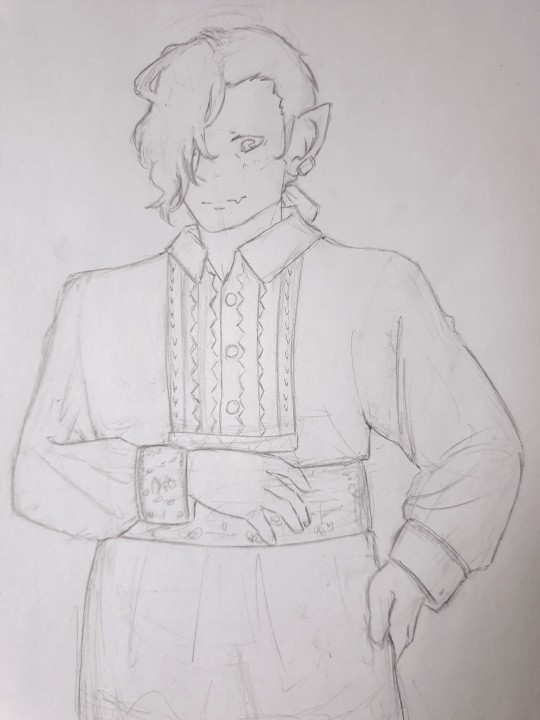
I missed drawing this guy!! Here he is in a shirt loosely based on a picture of a Romanian shirt I saw somewhere
#*googles Traditional Romanian clothes men* uhhh okay let's add one of those belts I think that's appropriate#i feel like you can go wrong pretty easily when it comes to traditional or historical fashion#so i kept it simple!#d gray man#dgm#arystar krory#d. gray man#d. gray-man#i hope i have the motivation to finish this. i barely started on the details on the cuffs and belt which is what this was all for aaaa
25 notes
·
View notes
Text

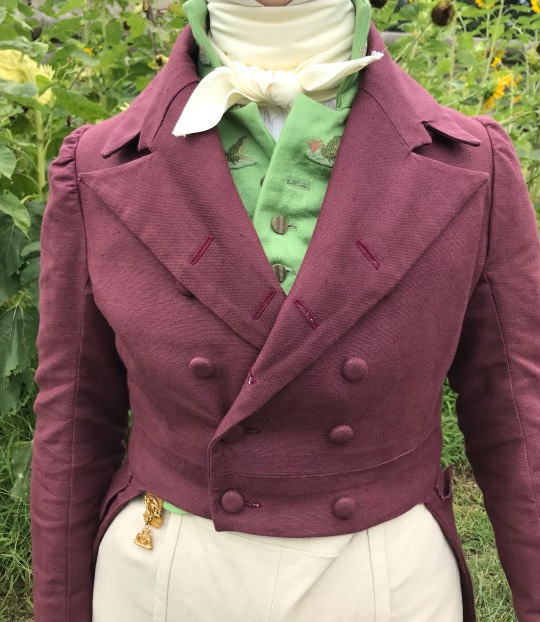

I’ve been very busy this month. Click on the pictures for full resolution.
I got the socks from American Duchess and my cravat is a rayon fabric I made into a cravat. Rayon is a really great substitute when silk is often too expensive, it also wrinkles less.
I got the socks from American Duchess and my cravat is a rayon fabric I made into a cravat. Rayon is a really great substitute when silk is often too expensive, it also wrinkles less.
#plus new fan I found!#scavenge most of my things in second hand stores#1820s’ men’s fashion#1820s mens clothing#fashion#regency menswear#regency men’s fashion#1820s#regency fashion#men’s historical fashion#historical fashion#sewing#handmade clothing#1810s mens fashion#my post
181 notes
·
View notes
Text

Carte de visite of four men in rustic clothing and fabulous wide-brimmed hats, 1867
#I recall the original seller had specified which region's folk costume this card represents#but past!me had higher priorities and saw fit to record nothing but 'hatlads.jpg' 😔#from cursory googling this clothing does not look like the folk costume of Auerbach Germany—Auerbach may refer to just photographer's name#19th century#1800s#1860s#19th century fashion#fashion history#historical fashion#folk costume#men's fashion#19th century photography#cdv#carte de visite
90 notes
·
View notes
Text
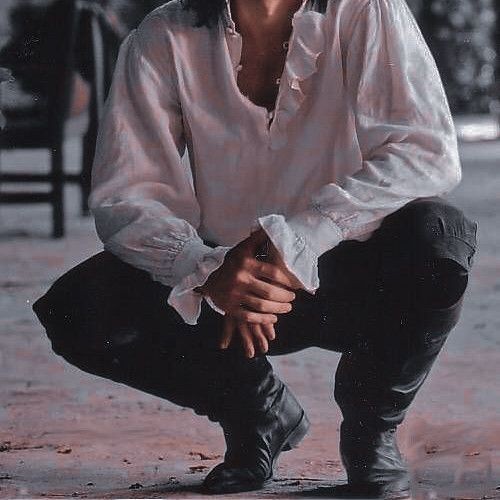
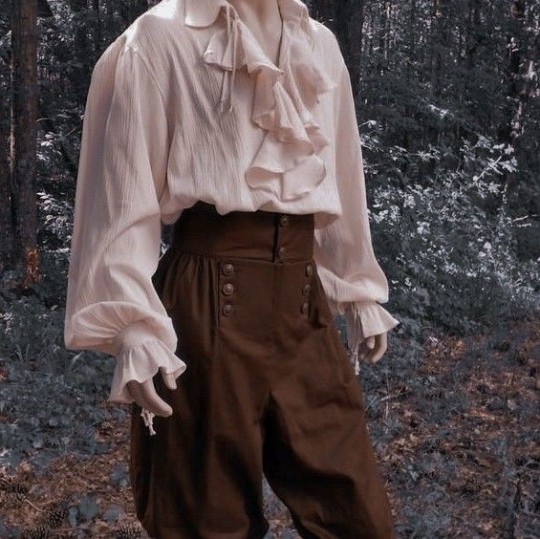

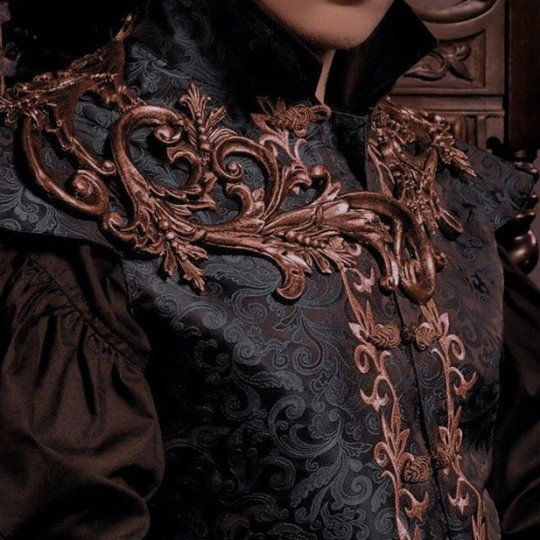

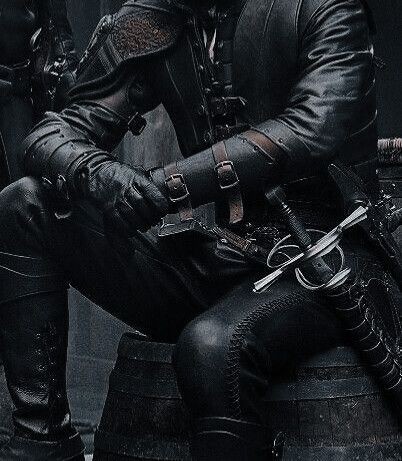


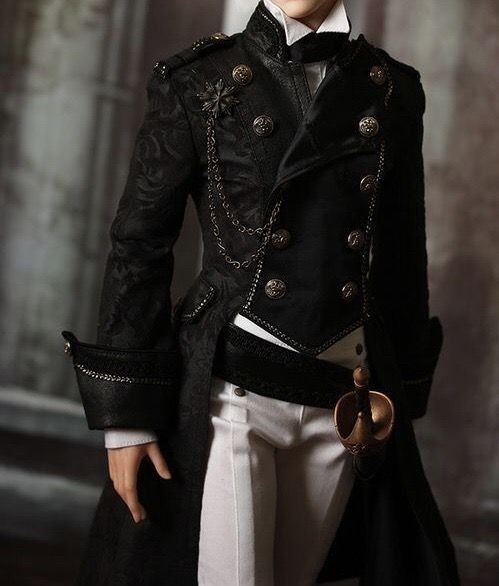
What is it about these looks?... Ah trick question. The answer is... YES.
#dark academia#light academia#academia aesthetic#classical#academia#escapism#classic literature#books#books and libraries#architecture#historical fashion#fantasy#cosplay#historical#men's clothing#men's fashion#royal core#cottage#period clothing#period drama#attractive
96 notes
·
View notes